How Translation Management Systems Handle Multi-Language Projects: A Practical Guide
Estimated reading time: 9 minutes
- A TMS centralizes workflows, automates repetitive tasks, and preserves quality across many target languages.
- Translation memory drastically reduces time and cost by reusing previously approved segments and maintaining consistency.
- RTL and complex scripts demand RTL-aware editors, Unicode support, bidirectional handling, and context-aware QA.
- Localization adapts content for regulatory, cultural, and regional preferences—not just literal translation.
- Version control, API integrations, and automation keep source and translated content synchronized and auditable.
Why Traditional Translation Methods Break Down at Scale
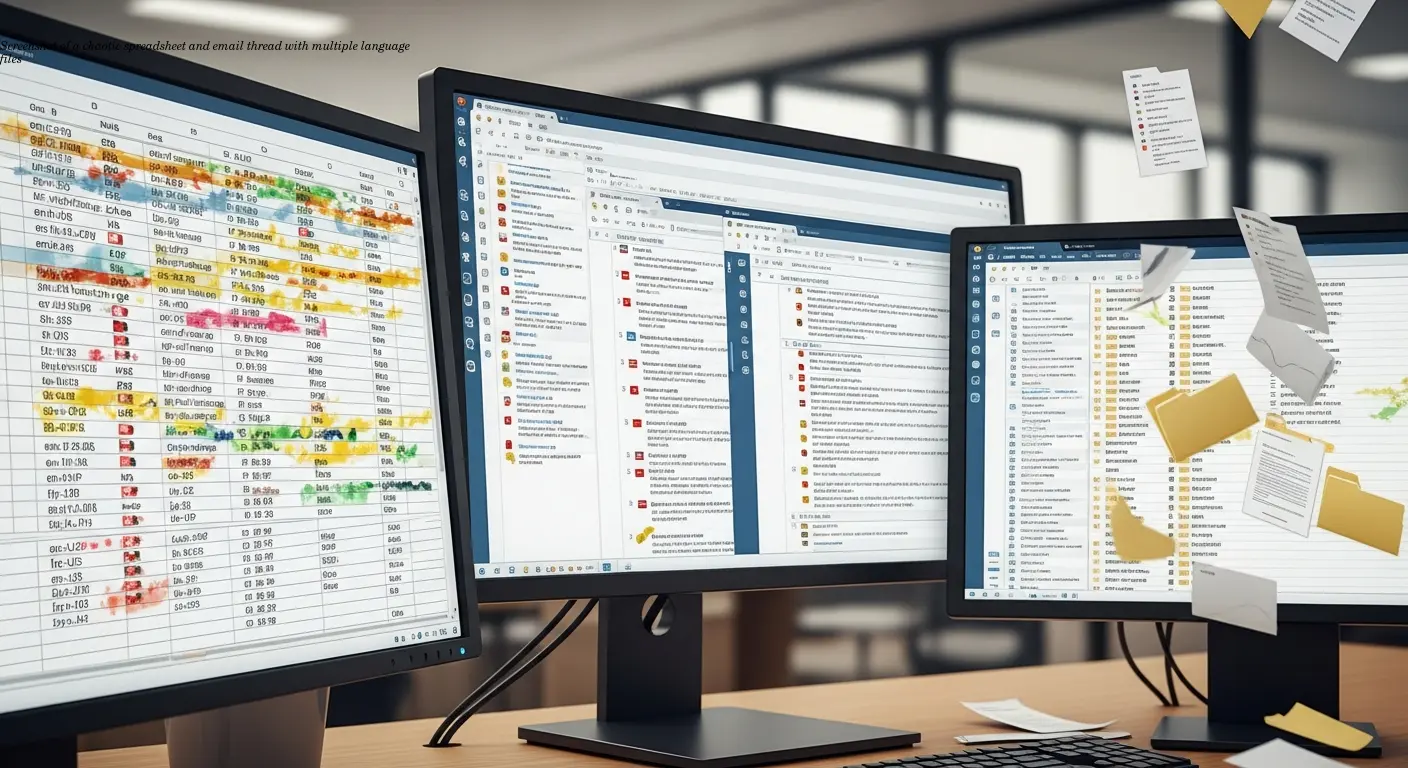
Real-world example: I worked with a shop owner expanding into six markets who managed translations through email chains and spreadsheets. Within two weeks he’d lost track of current versions, sent outdated documentation, and paid for duplicate translations.
Why this happens: Simple tools suffice for one or two languages. Add multiple scripts, RTL languages, several product lines, and frequent updates, and manual methods collapse under coordination overhead.
Key point: A TMS becomes the single source of truth—every string, asset, and version lives in one place, and everyone works from the same dashboard.
Above roughly five languages, unmanaged workflows start costing more in coordination than in translation itself. Modern TMS platforms integrate with your CMS, product database, and support tools so content flows automatically and version mismatches are avoided.
How Translation Memory Systems Save Time and Money
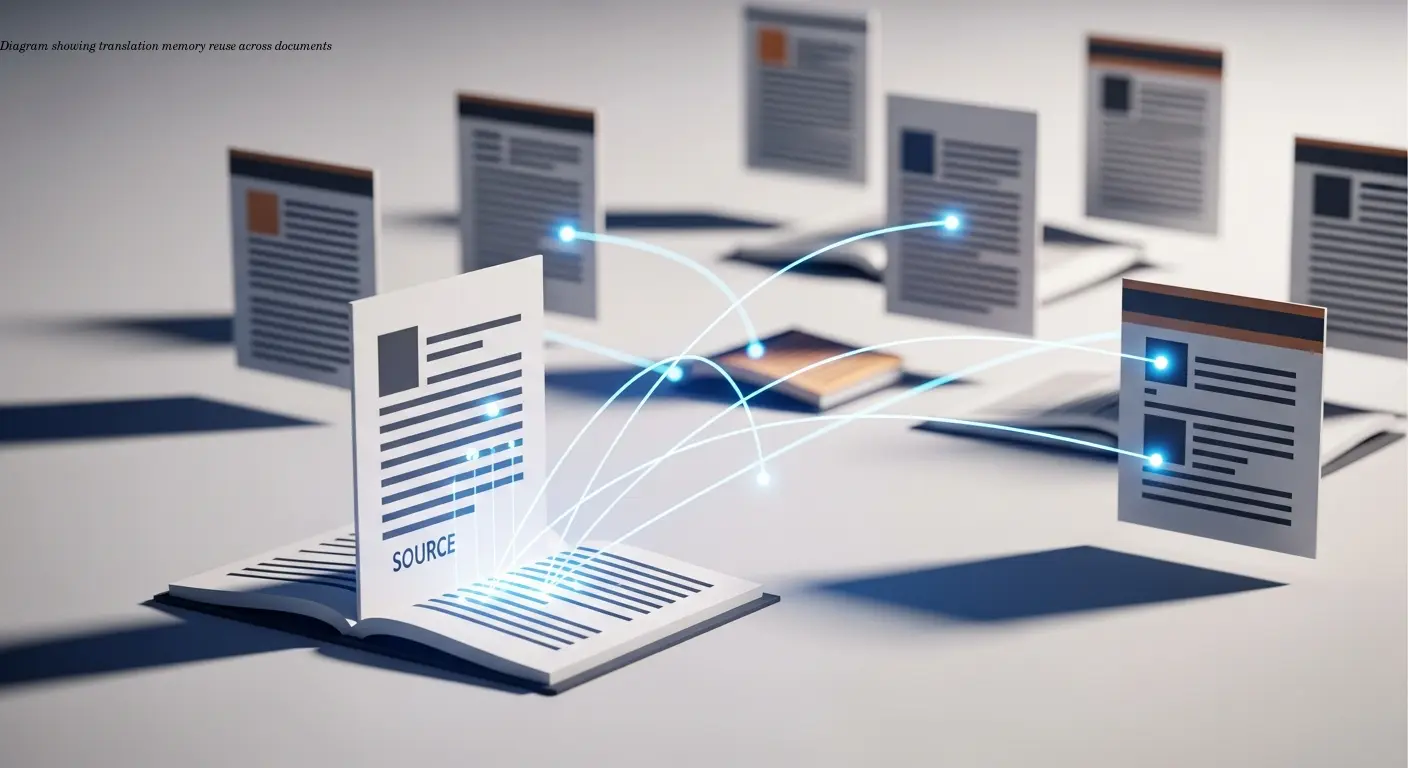
Translation memory (TM) is a database that stores every translated sentence with its approved equivalents. When new content arrives, the TM suggests matches from prior translations, instantly reusing validated segments like "Press the power button to start."
Benefits include:
- Cost reduction: I've seen teams cut translation costs by 40–50% once TM reaches critical mass.
- Consistency: Terminology and brand voice remain coherent across languages.
- Context-aware entries: The TM stores surrounding text so homonyms like bank are disambiguated by context.
Real-time updates and transparent audit trails (who created an entry, when, and from what source) mean improvements propagate immediately and decisions are traceable months later.
Managing Right to Left RTL Languages and Different Scripts
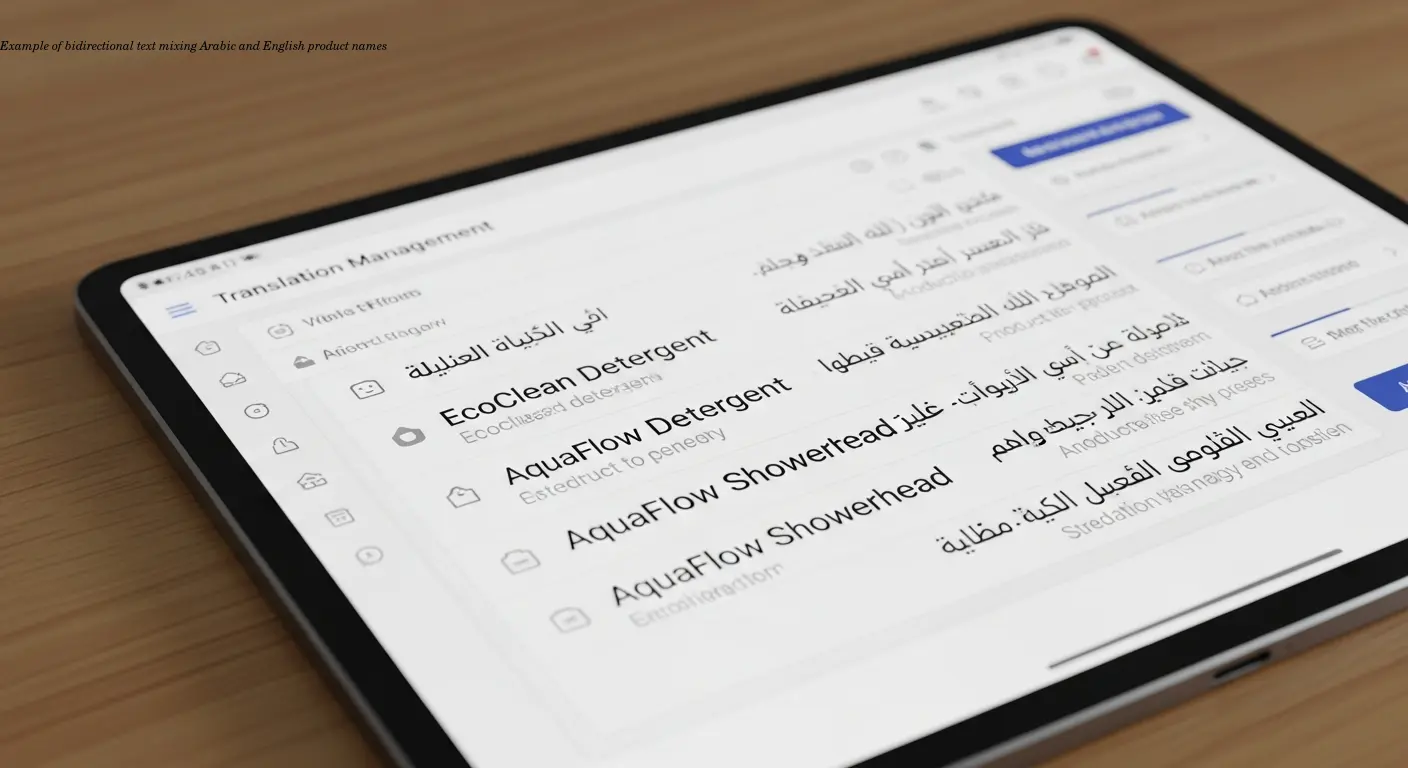
RTL specifics: Arabic and Hebrew require bidirectional handling, correct punctuation placement, and accurate number formatting. A proper TMS includes RTL-aware editors that switch directions within sentences when needed.
QA tools should be RTL-aware—flagging misplaced punctuation, diacritical issues, or incorrect direction settings. Visual, in-context previews are vital so translators can see how content renders in the final layout and catch positioning problems early.
Different scripts: Chinese, Cyrillic, Devanagari, Thai, and others require full Unicode support, correct font handling, and appropriate segmentation rules (some scripts don’t use spaces between words). If a TMS wasn’t built for global support from the ground up, you’ll encounter limitations.
Understanding Localization vs Translation in Practice
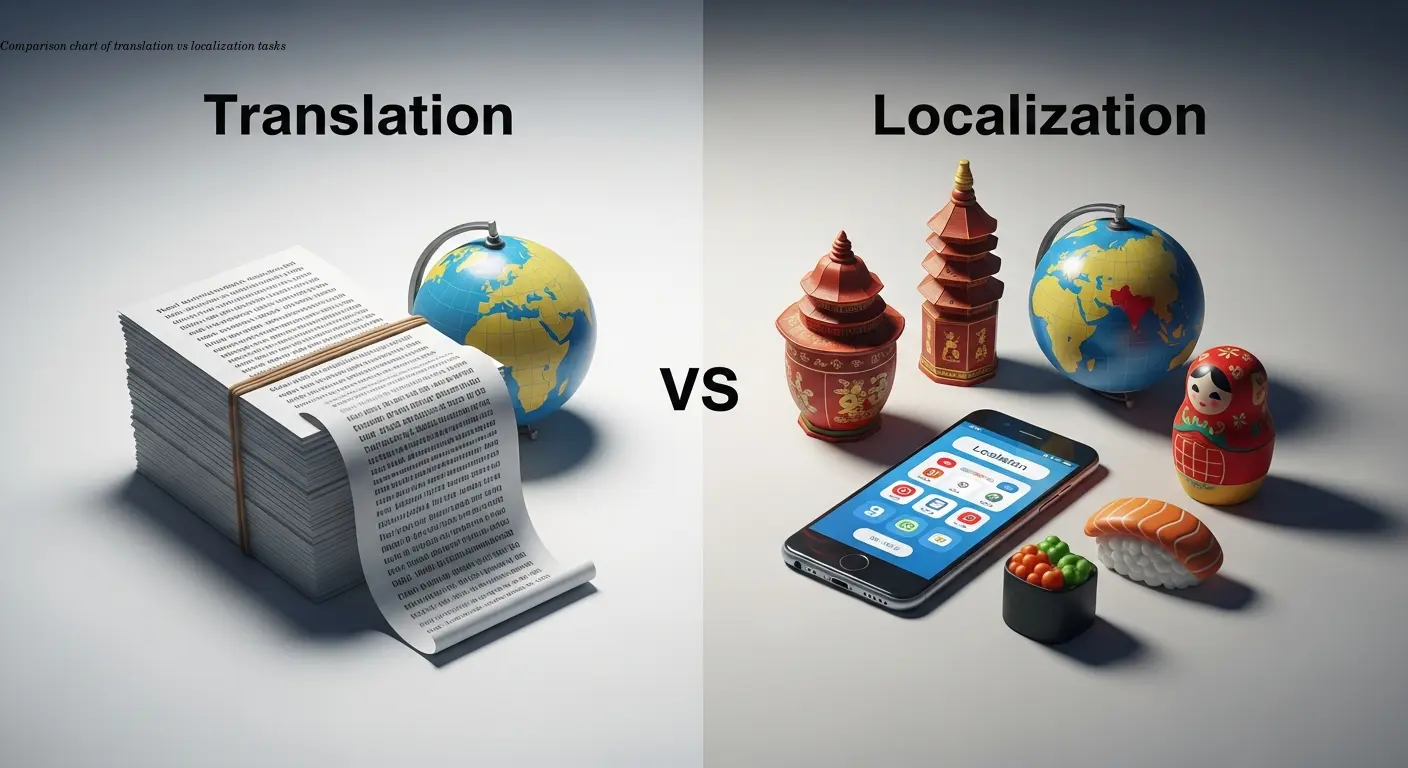
Translation converts words; localization adapts content for a market’s culture, legal requirements, and conventions. I worked with a power tools manufacturer that used one Spanish translation for Spain and Latin America—technically accurate but incompatible with local voltage and safety terminology, which created confusion and risk.
Good localization changes currencies, dates, measurement units, legal disclaimers, and examples to suit the region. A TMS should support locale-specific glossaries and regional tagging (e.g., French for France vs. Canada).
Practical tip: Provide context assets—screenshots, videos, and regional instructions—so translators make informed choices from the start.
Version Control Features That Prevent Translation Chaos

A TMS with version control records the complete history of every asset: what changed, who changed it, and when. For each source version you can see translation status per language, so you know which need updates.
When source updates occur, automation flags affected translations and creates update tasks. For continuous localization, this keeps translations synchronized with product development and prevents wrong instructions or outdated safety warnings from reaching customers.
Workflow Automation and Team Collaboration Features
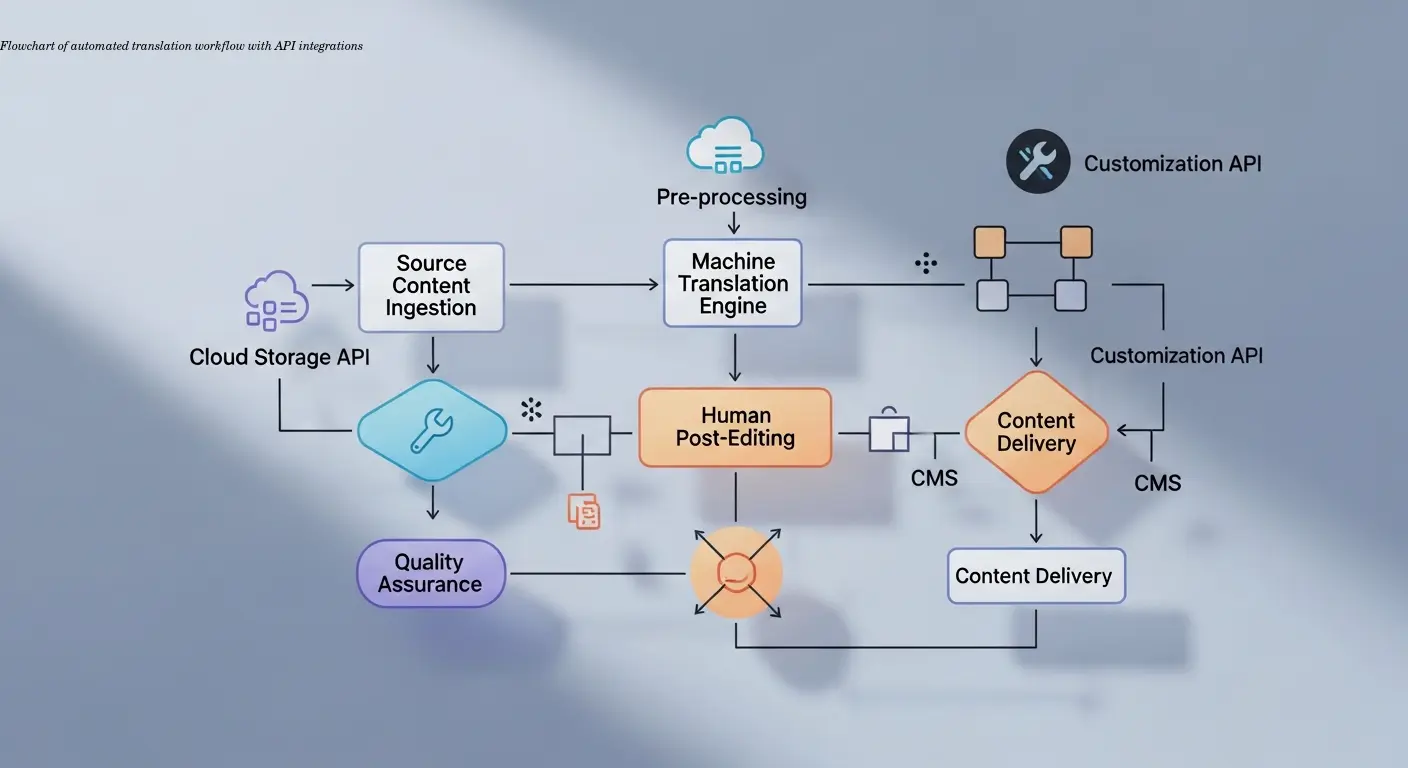
Automation handles repetitive tasks—assignment routing, notifications, progress tracking, and deliverable compilation—so teams focus on quality. Modern TMS platforms let you define workflow templates and route content to translators by language pair, expertise, and workload.
Integrations: APIs keep content flowing: CMS updates push into the translation queue; approved translations deploy back to WordPress or your knowledge base automatically.
Collaboration features allow multiple translators to work on a project without overwriting each other, and in-segment comments keep questions attached to context rather than vanishing into email. Automated QA checks catch mechanical errors, freeing reviewers to focus on nuance.
Choosing the Right Translation Management System Features

Evaluate these areas:
- Language support: Ensure full support for your target scripts and RTL handling where required.
- Integrations: Native connectors for WordPress, CMS, CRM, ERP, and product databases reduce manual work.
- Translation memory & terminology: Can you import existing translations and manage multiple glossaries per region or product line?
- User interface: In-context editors and clear UX increase adoption among translators and reviewers.
- Pricing & scalability: Understand how costs scale with languages, words, and users—per-word, per-user, or per-project models affect ROI differently.
Practical Implementation for Multi-Language Product Documentation
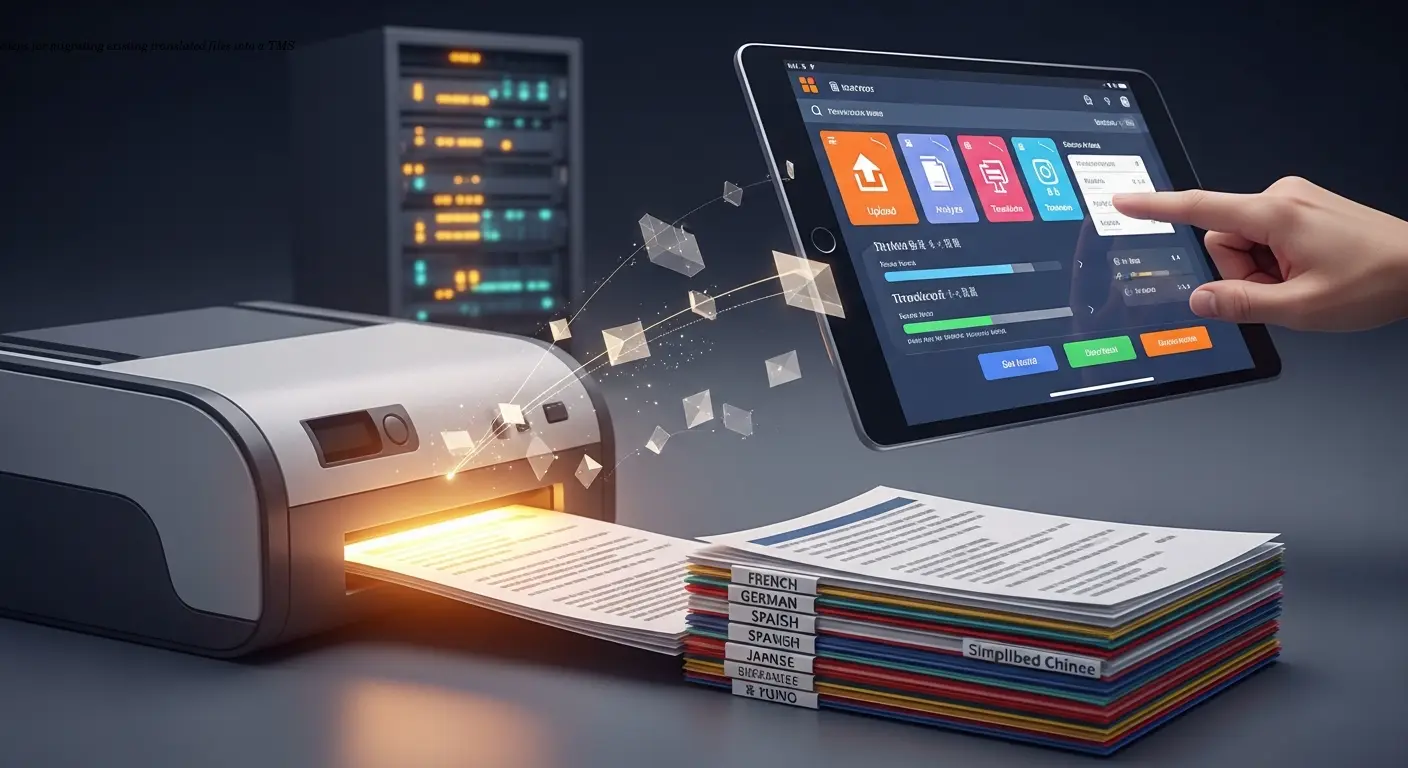
Step 1 — Consolidate existing translations: Import all past translations to seed your translation memory. This upfront work converts prior costs into reusable assets.
Step 2 — Build glossaries and style guides: Collect input from product experts, support teams, and native speakers. Use these references to keep terminology consistent.
Step 3 — Standardize source formats: Structured formats (XML, Markdown) simplify processing. Consistent input reduces friction during import/export.
Step 4 — Train users and run a pilot: Train internal staff and external translators, then start with a pilot product line to refine workflows before broad rollout.
Step 5 — Monitor metrics: Track translation speed, cost per word, revision rates, and translator feedback to quantify ROI and guide improvements.
FAQ
What's the main difference between a TMS and just using human translators?
A TMS doesn't replace human translators—it gives them better tools and automates project management. Translators still do the actual translation work, but they access translation memory, see context, follow style guides, and work within quality-controlled workflows. The system handles coordination, tracks versions, and ensures consistency across all your languages.
Can a translation management system really handle technical content like appliance manuals?
Yes, actually technical content works especially well in a TMS. Product manuals contain lots of repeated phrases, standardized terminology, and structured information—exactly the type of content where translation memory delivers huge benefits. The glossary features help maintain consistency for technical terms across all languages.
How long does it take to see ROI from implementing a TMS?
Most businesses see measurable benefits within 3-6 months, once translation memory reaches useful size and workflows stabilize. The exact timeline depends on your translation volume—if you're constantly producing content in multiple languages, payback comes faster. Efficiency gains compound over time as your translation memory grows.
Do I need technical expertise to manage a TMS?
Not for daily operations. Modern platforms are designed for non-technical users. Initial setup and integration might require some technical knowledge, but many TMS providers offer implementation support. Once configured, project managers handle day-to-day operations through intuitive interfaces without needing IT backgrounds.
How does a TMS handle updates to previously translated content?
When source content changes, the system identifies which translations are affected and creates update tasks for translators. Translation memory helps here too—unchanged segments don't need retranslation, so you only pay for the new or modified content. Version control tracks everything, so you know exactly what changed and when.
Can small businesses benefit from a TMS, or is it only for enterprises?
Small businesses managing even three or four languages can benefit, especially if they're growing internationally. Some platforms cater specifically to smaller teams with simpler pricing and scaled-down features. The key question is whether you're translating enough content that manual coordination is becoming painful—if so, a TMS helps regardless of company size.
What happens to our existing translations when we start using a TMS?
You can import existing translations to populate your translation memory from day one. This preserves the value of work you've already paid for and immediately enables reuse. The quality of imports depends on file organization, but most TMS platforms support bulk importing from common translation formats.
How do translation management systems handle confidential product information?
Reputable TMS platforms include security features like encryption, access controls, and confidentiality agreements. You can restrict which translators see which content, maintain audit trails of who accessed what, and use secure transfer protocols. For highly sensitive content, some businesses run TMS installations on their own servers rather than using cloud platforms.